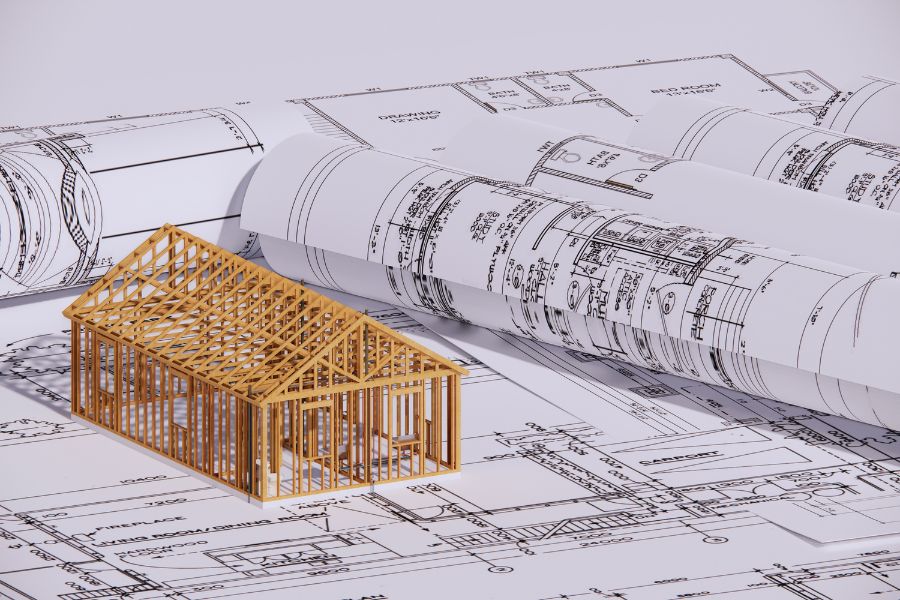AR Software Benefits in Architecture
Words and Photos: Anna Scott, Communications & Content Manager at AUGmentecture
Over the past years the architecture and construction industry has been evolving from traditional practices into more technological, interdisciplinary, smart methods. In contrast to the other artistic and scientific fields, architecture has been considered one of the most immersive ones as it engages all of your senses, thanks to technological development.
Today it has been transformed from paper into an interactive experience thanks to augmented reality technology.
What Is AR?
In general, AR is the mixture of the physical world with a computer-generated input, and in architecture, AR is the overlaying of the architectural 3D model over the real world, which has already proved its efficiency in the field. It allows all parties to better explore the architecture, structure, and mechanical systems, and it works best when combined with BIM technologies.
What Is BIM?
BIM is the acronym for Building Information Modeling, which is, on its part, a highly collaborative process allowing all parties of the project to work on the same 3D model.
This technology, which is skyrocketing in the AEC industry, combined with AR, can bring out the best and most sustainable result for the project by making the drafting process more efficient and flexible.

How Can AR With BIM Benefit AEC?
In a highly collaborative field like AEC, it is extremely important to have effective teamwork1 for the best outcomes.
Augmented Reality ensures that everyone in the project is on the same page, and problems are solved in the very beginning phases, even without all team members being present on the construction site, which is another critical factor, especially after the pandemic.
Connected to all the relevant parts of the project in all its phases, it allows the possibility to explore, experiment, and break the stereotypes of project drafting.
To make it clear, here are the cases where AR works best:
Concept Phase - Before the Start of Construction
This allows seeing the preliminary look of the space. The use of AR and BIM combination2 in the AEC industry is huge and together, they provide seamless pre-construction planning with better collaboration between stakeholders, enhanced visualization, and lower costs, to name a few. AR enables the option to walk through the future building, have the 3D model overlayed over the real environment, and see the preliminary view of the project.
Construction Phase
In this phase, AR helps to see if everything goes as planned and clashes are detected on time. As said in the previous point, the combination of these both provides a well-planned construction plan3 as well as execution with a realistic and interactive AR visualization backed up with a data-driven 3D model of the project. It saves up time and costs and makes sure of on-time project completion. Moreover, if any changes occur with the help of interactive 3D viewing of AR, everything will be changed simultaneously.
Post-Construction Phase
And finally, the final point is that by the end of construction, you will have all the information, data, visualizations, and building schedules stored in one place, which can be necessary for the post-construction cycle of the building. And most importantly, this will be a completely paper-free process.
It has already started showing architects and designers its benefits by helping all the stakeholders collaborate, improve communication with clients, troubleshoot the clashes and problems of the project, and identify risks in all design phases.
For non-designers, it helps to understand how the architecture of the building works, thanks to its special equipment or even sometimes without it; AR helps the viewer to be immersed in the architecture, understand the proportions, orientation, materials4, feel the space and walk inside very long before it is actually built.

Benefits of AR Softwares in Architecture
Today, some apps give those opportunities without needing special equipment, only by having your phone equipped with the right apps, making AR more accessible.
As mentioned above, AR is an excellent tool for collaboration, as it makes all the processes more comprehensive for everyone, and its real value has been recognized, especially after the pandemic, when remote collaboration became the key, and AR has been the protagonist pushing this frontier. It allows all the teammates to work remotely, see it in advance, and experiment in that quasi-virtual environment.
Fundamentally, it's a great collaboration tool, especially now combined with BIM technologies. It brings out the best results by creating an immersive experience backed up by all the project data.
AR is also cost-effective and time-efficient, as it helps prevent unnecessary expenses and saves time, which is crucial in today's fast-paced world. Furthermore, it also promotes sustainability by reducing waste in materials.
Of course, the implementation may be challenging as it is a completely new way of drafting and requires a constant connection which is sometimes not possible on the construction sites; it requires a specific mindset and training.
Still, it brings the best result for all the stakeholders. With a better drafting way combined with AR, we can look at the future at the tip of our hands.
Sum Up
In conclusion, BIM and AR, each by itself, have been great innovations in the tech and AEC industries but combined, they will help their users achieve their best performance by making each and every step of the project manageable, on time, and precise with having all the data and interactive visualizations in one place. There is a wide range of opportunities and benefits for all the collaborators as the process is more simplified and better planned.
About The Author
With a Bachelor's degree in English Language and Literature, Anna started her career path as a technical content writer at a small mixed reality start-up. This was where she uncovered her passion for design and architecture. She is now the Communications and Content Manager, with strong linguistic background and significant experience in design and architecture.
References
1. https://smallbusiness.chron.com/effective-teamwork-construction-12170.html
2. https://www.augmentecture.com/blog/bim-and-ar/
3. https://www.constructionplacements.com/construction-plan/#gsc.tab=0
4. https://proest.com/construction/tips/common-materials/